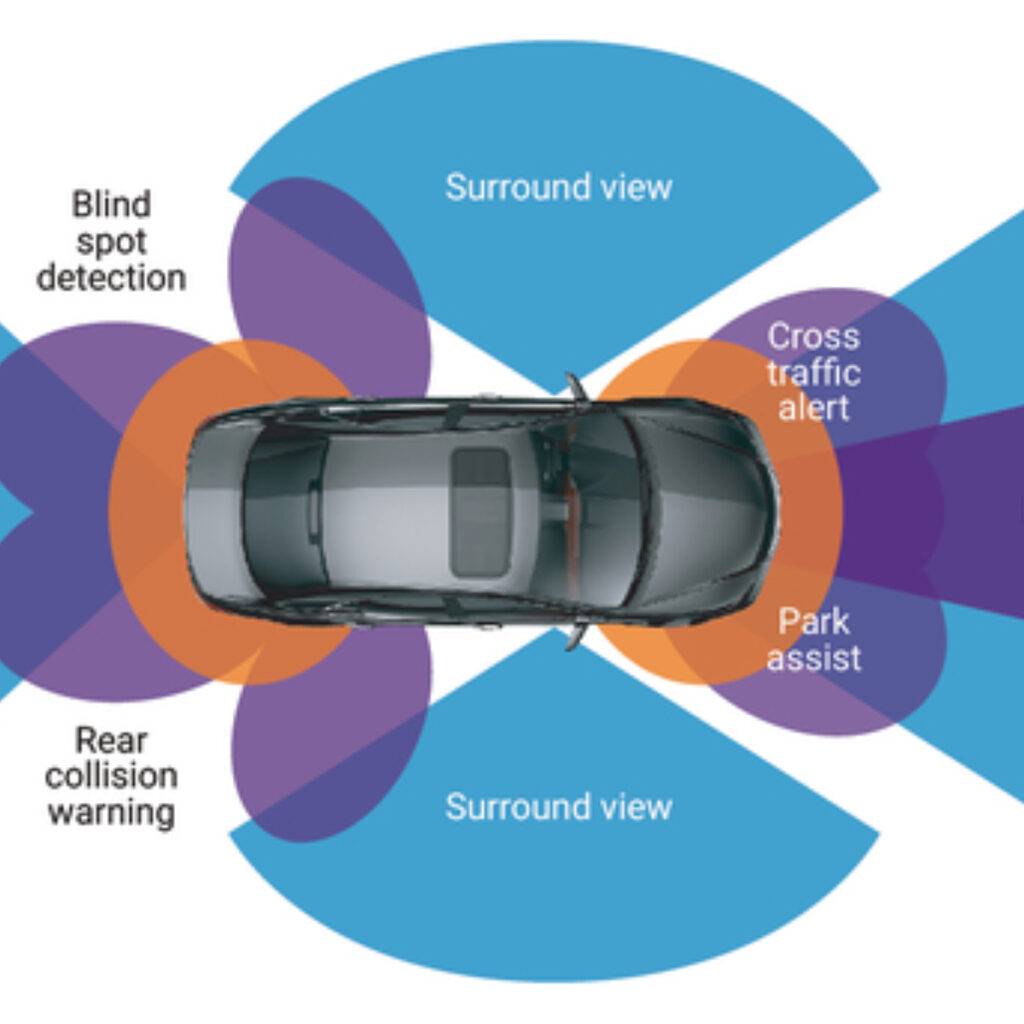When a car is driven off the showroom floor, it’s not just as beautiful as it will ever be — it’s also at its safest, with a fresh set of tires and brakes, and everything mechanical in perfect working order.

In today’s cars though, safety features go far beyond the physical and mechanical, into what are collectively called Advanced Driver-Assistance Systems, or ADAS. Relying mainly on computers, sensors, chips, and electronics, these powerful defense mechanisms can help correct for driver errors across the whole range of a vehicle’s functions. And in the future, they may even go so far as to allow for fully self-driving cars.
But to really understand these ADAS, let’s go back to the original driver-assistance system that started it all: Anti-lock brakes.
The First ADAS
From the time of the first automobile, ineffective braking has been a major cause of accidents. Applied too heavily, brakes could “lock up”, further sending the vehicle into a skid (or worse).
As early as the 1920s, automobile manufacturers were looking for ways to prevent this worst-case scenario with hydraulic mechanisms, and later with purely mechanical systems in the experimental Ford Zodiac circa 1950.
But it wasn’t until 1971 when Mario Palazetti of the Fiat Research Center developed the first of what would become today’s ADAS: An entirely electronic, computerized system to prevent brake locking.
From there, it was off to the races, with designers creating a whole range of ADAS: Electronic stability controls, blind spot information systems, adaptive cruise controls, and traction control. With each advancement, cars became safer to drive — and more resistant to human errors.
Driver-Assistance Systems Today
With increasingly sophisticated technologies and more powerful computers available year by year, today’s cars are safer than ever thanks to comprehensive ADAS systems. In fact, there are so many different ADAS that the Society of Automotive Engineers has created a classification system, divided into six levels (0 through 5).
At level 0, ADAS provide information for the driver that they’ll then have to interpret on their own. These include parking sensors, lane departure warnings, blind spot information systems, forward collision warnings, and more.
At level 1, ADAS systems can take control over one function of the car, whereas at level 2 the car can take over multiple traffic functions at once. Adaptive cruise control, emergency braking systems, and lane centering all fall within level 1, while things like highway assist and autonomous parking fall firmly within level 2.
Levels 3 through 5 have not yet been fully integrated into cars that you can buy off the lot, with many of their features still in the experimental stage. With each level of increase, the car does more of the driving — with level 5 being fully autonomous driving.
The Future of ADAS
From the introduction of driver-assistance systems just over 50 years ago, we’ve progressed to a point where fully autonomous cars are being tested on America’s roads. Could we see a future where drivers will no longer need to have a physical hand in operating their vehicles? It’s certainly possible — but that will also mean that maintaining your vehicle’s systems becomes more important than ever.
That’s why we’re always keeping up to date on the latest developments in automotive technology here at Chapel Hill Tire: So that no matter how cars and driving change, you’ll always be able to rest easy knowing that you’ve had your maintenance taken care of at one of our 11 locations in the Triangle.